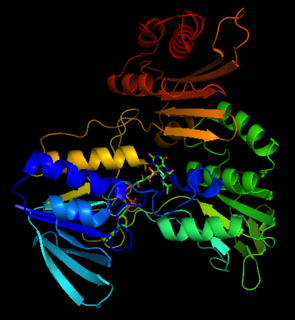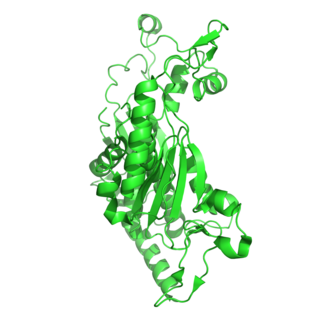| |||
 | |||
| Names | |||
|---|---|---|---|
| IUPAC name (2R)-2-acetamido-N-[(2R,3R,4R,5S,6R)-4,5-dihydroxy-6-(hydroxymethyl)-2-[(2R,3S,5R,6R)-2,3,4,5,6-pentahydroxycyclohexyl]oxyoxan-3-yl]-3-sulfanylpropanamide | |||
| Other names Mycothiol | |||
| Identifiers | |||
3D model (JSmol) | |||
| ChEBI | |||
| ChemSpider | |||
| KEGG | |||
PubChem CID | |||
| |||
| |||
| Properties | |||
| C17H30N2O12S | |||
| Molar mass | 486.49 g/mol | ||
Except where otherwise noted, data are given for materials in their standard state (at 25 °C [77 °F], 100 kPa). | |||
Mycothiol (MSH or AcCys-GlcN-Ins) is an unusual thiol compound found in the Actinomycetota. [1] [2] It is composed of a cysteine residue with an acetylated amino group linked to glucosamine, which is then linked to inositol. [3] The oxidized, disulfide form of mycothiol (MSSM) is called mycothione, and is reduced to mycothiol by the flavoprotein mycothione reductase. [4] [5] Mycothiol biosynthesis and mycothiol-dependent enzymes such as mycothiol-dependent formaldehyde dehydrogenase and mycothione reductase have been proposed to be good drug targets for the development of treatments for tuberculosis. [6] [7]












